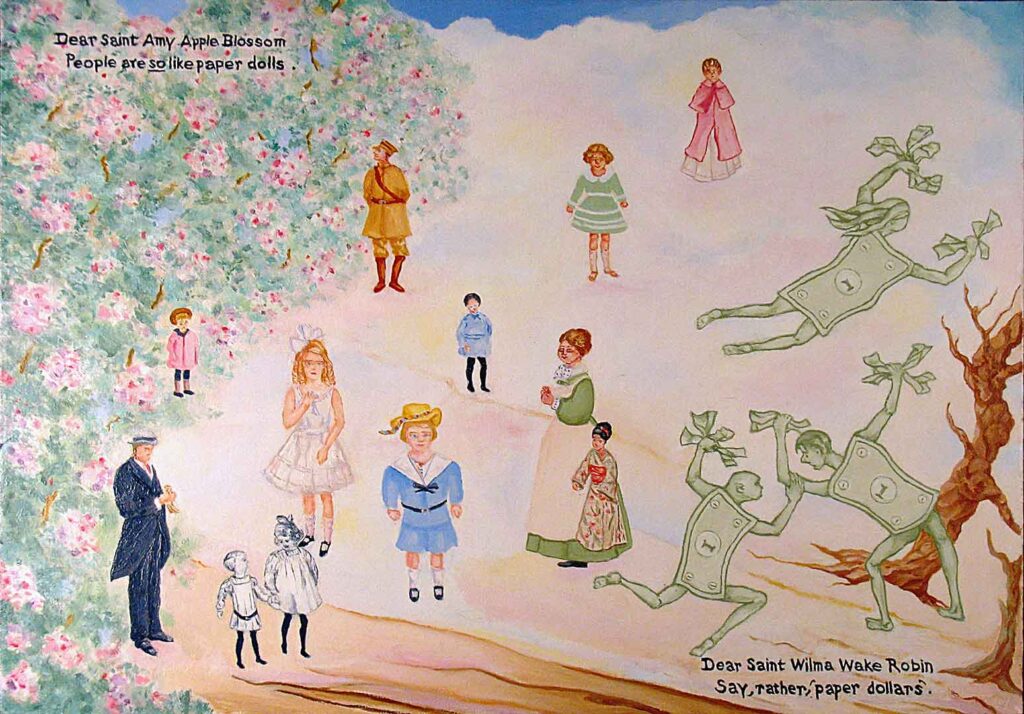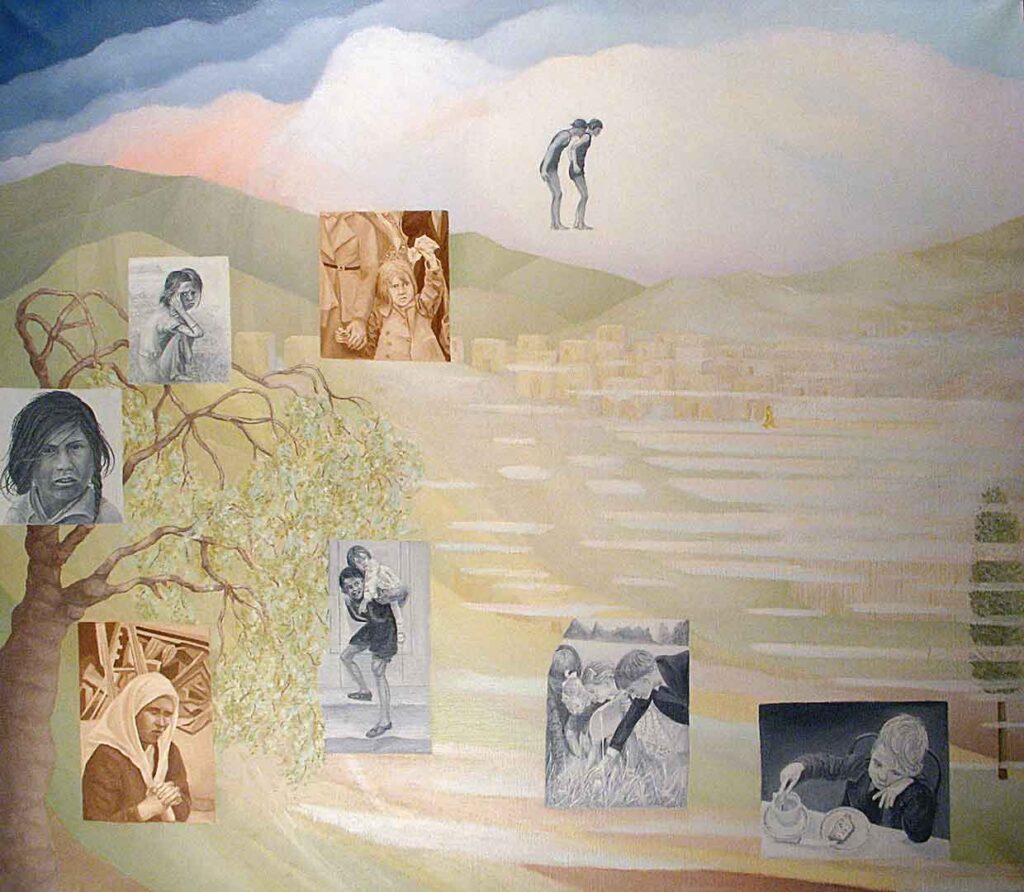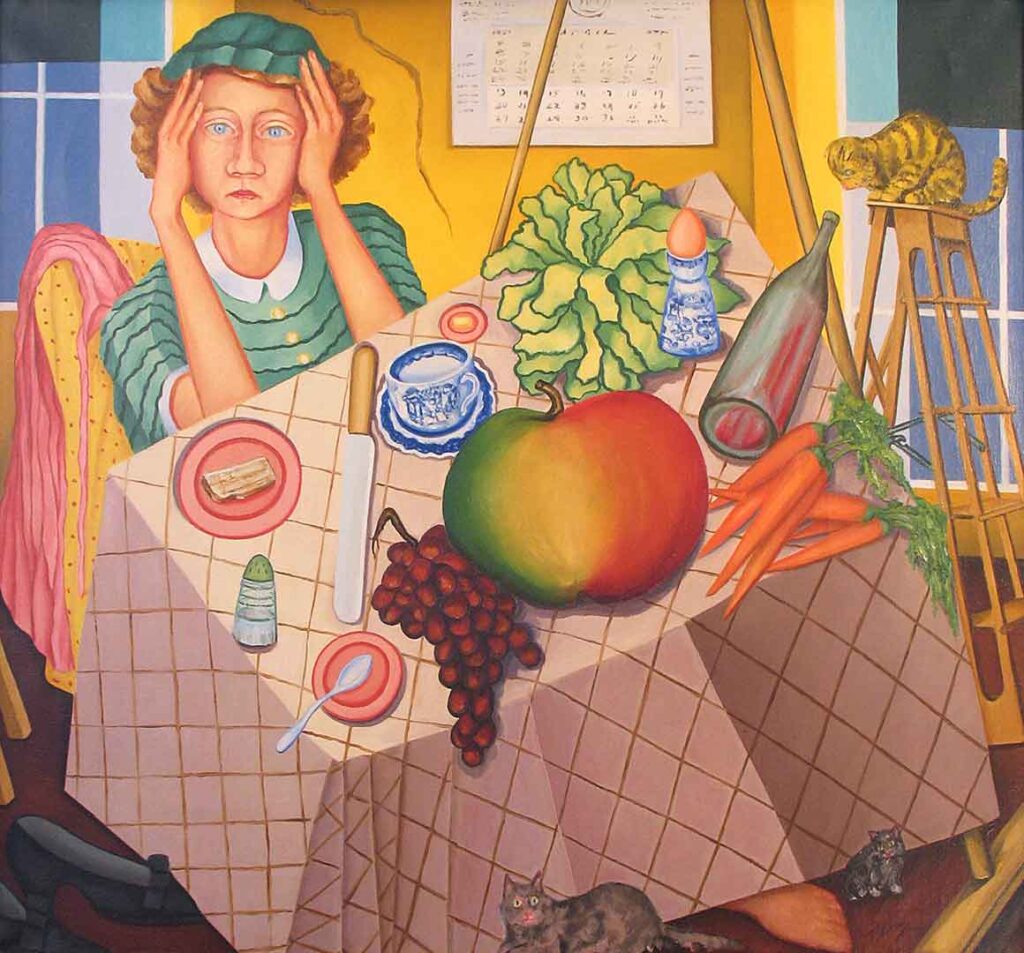More On Themes
Quinton Oliver Jones was not drawn to the popular themes of many artists. He eschewed the typical categories of “realistic landscape,” “still life,” or “portraiture,” for example.
He was more interested in conveying the emotional impact of his subjects, those which he himself felt. Notice his use of dead trees versus blooming trees. Dead trees represented a barren end while live trees suggested possibility and life.

“Paper Dolls”
Collage
On Quinton’s trip to Europe in 1928, he would have seen artists using scraps of paper cut and pasted to the surface of their canvas, what we call “collage.” Likewise, he would paint a newspaper clipping or photo in monotone to make a statement that enhanced the theme of his painting.

“Nazareth Early One Morning”
Style & Space
Quinton’s work does not fit into any consistent style as we know it. He was totally aware of traditional ways of depicting space, yet he chose whatever techniques he felt best to express the emotions he wished to convey.
When we look at the spatial environments that he painted, we frequently find a horizon line to stabilize the space. The opposite was true, however, when he created flat, abstract compositions. In these pieces, he felt confident distorting traditional spatial relationships to achieve the desired effect.t

“Daughter of Eve”